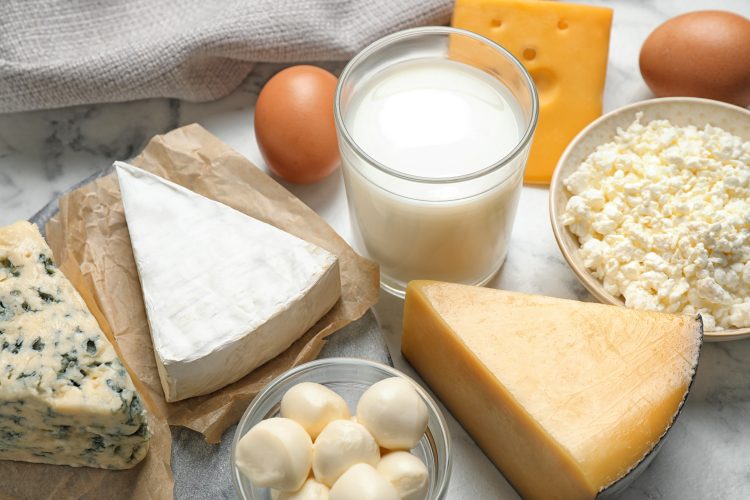What’s next for dairy? FrieslandCampina outlines its key trends
- Like
- Digg
- Del
- Tumblr
- VKontakte
- Buffer
- Love This
- Odnoklassniki
- Meneame
- Blogger
- Amazon
- Yahoo Mail
- Gmail
- AOL
- Newsvine
- HackerNews
- Evernote
- MySpace
- Mail.ru
- Viadeo
- Line
- Comments
- Yummly
- SMS
- Viber
- Telegram
- Subscribe
- Skype
- Facebook Messenger
- Kakao
- LiveJournal
- Yammer
- Edgar
- Fintel
- Mix
- Instapaper
- Copy Link
Posted: 16 February 2023 | Joshua Minchin (New Food) | No comments yet
From ‘Weastern’ cuisine to ‘Frasian’ pastry, FrieslandCampina Global Marketing Director Industry Jules Kramer outlines the trends that the dairy giant thinks are going to be key in 2023.


In an industry where innovation never ceases, the dairy sector can seem to some a more sedate, traditional sphere. After all, how much can you do with milk, cream and cheese?
To think this would be a mistake. The dairy sector is as fast-paced as any other in the food and beverage industry, and at its forefront is FrieslandCampina, one of the giants of the dairy world. In its recent Professional Trend Report for 2023, the multinational explained where it foresees the dairy sector heading, and New Food spoke to Global Marketing Director Industry Jules Kramer, to learn more.
Weastern and Frasian…?
To the uninitiated, the above may look like some sloppy typing, but no, those words are not misspelt. Instead, they are two of the core trends outlined by FrieslandCampina. But what are “Weastern” and “Frasian”?
“This trend stands for food where ‘West meets East’: Weastern. This trend sees culinary influences from all over the globe spread and engage at a far faster pace than ever before. When West meets East we can travel the world on a single plate,” explained Kramer.
“We see for example the refinement of Japan and the innovativeness of Korea combined with the traditional techniques of France and the ever-popular classics of Italy. We see this trend in consumer products, but also on an industrial scale.”
And Frasian? “One of the other micro-trends in our Trend Report is called ‘Frasian pastry’; an exciting blend of French and Asian flavours and texture combinations. The trend emerged when Asian chefs returned from their pastry education in France and started blending French techniques and pastry classics with local ingredients while simultaneously expressing seasonal tastes.
“In our Trend Report, we touch upon great examples like the Melon Pain; this Asian sweet treat is a true fusion of east meets west. The traditional French Brioche bread is covered in a thin layer of crisp cookies, with a ‘crackled’ top.”


‘Frasian’ pastry was created after Asian chefs fused techniques learned in France with local ingredients
Make that to go
There has arguably never been more of a shift in the way the food and hospitality industry operates than that of Q1 in 2020 (or certainly not one more sudden). Thousands of businesses which had built an entire revenue model on takeaway customers had their customer base eliminated overnight.
Slowly but surely things are returning to something resembling “normal” and customers are passing those ice cream stalls and pastry shops. To call this a trend would imply it’s new, but Kramer certainly sees this way of operating returning or rebounding back towards something that looks like 2019.
“I do expect the ‘to-go’ sector to increase in 2023. Traditional meals at traditional times are history and really something of the past! Today’s consumers have instant 24/7 access to emerging food trends from around the globe, and love to experiment and broaden their horizon. There is a growing appetite for hybrid creations- familiar dishes with an unexpected twist. See for example our recipe for the pizza cone on-the-go.”
Kramer also explained that consumers are demanding more from their to-go options, and that those core flavour trends still apply to what could be considered more convenient foods.
“I think that each of those global trends we identified also apply to ‘to-go’ foods. For example, from the Weastern Wonders trend, we see many unexpected and new hybrids emerging constantly. Especially in street consumed on the go.
“But we also see that consumers are increasingly concerned about their impact on the planet, and about their own health. These aspects are touched upon in the Global Trend ‘Conscious Curiosity’. And for foods on-the-go this is no exception.”
External pressures
No 2023 trends piece would be complete without an examination of the barrage of crises striking the walls of the food and beverage city seemingly weekly. Professor Chris Elliott used the term “permacrisis” which feels unfortunately apt.
FrieslandCampina has also faced tough time recently, as Kramer revealed. “Like everyone else in the industry, we are also facing highly increased, and continuously increasing raw material prices as well as inflation pushing up indirect costs,” he told New Food.
“We have mitigation plans on all cost drivers, for example finding alternative raw materials or making our operations more efficient where possible. The reality is that on some parts of the business, it is impossible to offset all cost increases, which does mean we have to increase prices. We are however confident that our offerings have significant added value for which in the end, consumers are prepared spend a bit more.”
Yet amid rocketing inflation and war in Ukraine, the climate crisis is an underlying problem we all need to worry about. There has been talk by some that sustainability might fall by the wayside as budgets tighten both for consumers and manufacturers alike. Yet Kramer does not see it that way at all.
In fact, when asked if priorities might shift in this regard, his answer was emphatic. “No. In fact and in general, we expect sustainability to become more and more important. How sustainability influences someone’s purchases and buying behaviour might be different per individual, but we truly believe that sustainability will evolve into a hygiene factor rather quickly.”
In this vein, Kramer was also keen to stress how important it was to FrieslandCampina that its growers and producers receive a fair price for their products.
“Co-operative dairy farmers are very important and close to us, and we know they deliver a great product that is part – and often the start – of what billions of people around the globe consume on a daily basis.
“At the same time, we appreciate that times are tough for these farmers as they also face steep cost increases for their individual businesses. It is therefore crucial to make sure farmers also receive, and keep receiving, a fair price for their efforts.”
Related topics
New product development (NPD), Research & development, retail, Sustainability, The consumer








